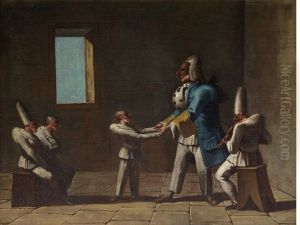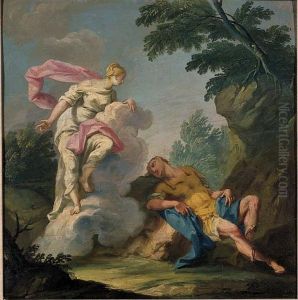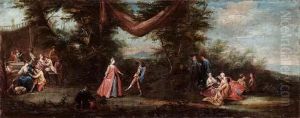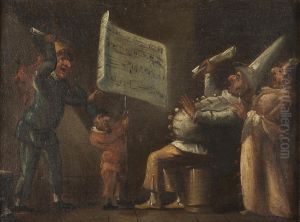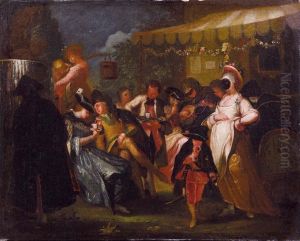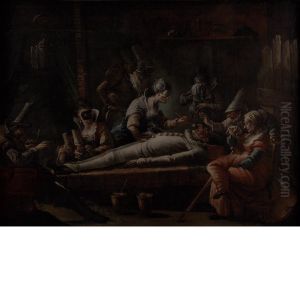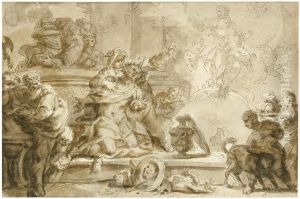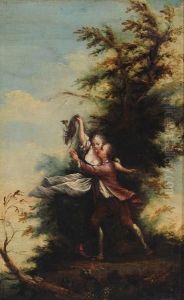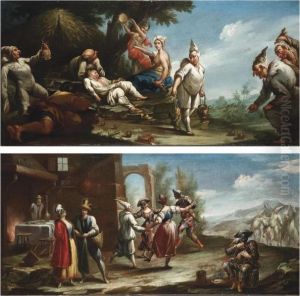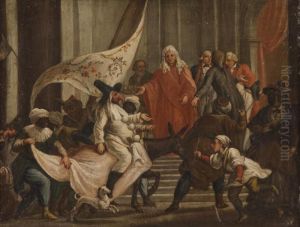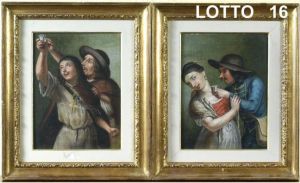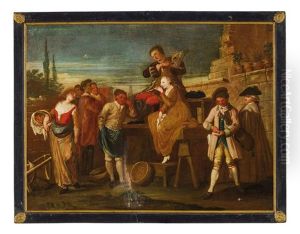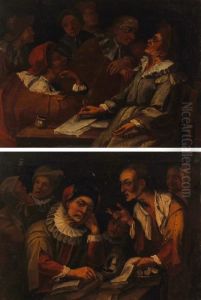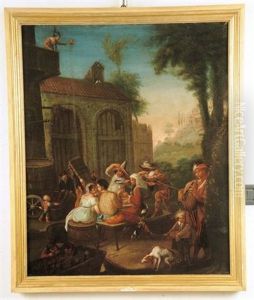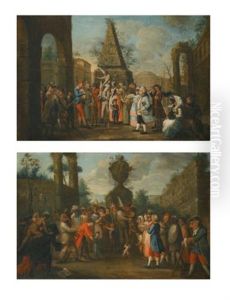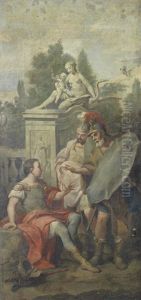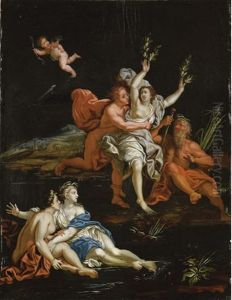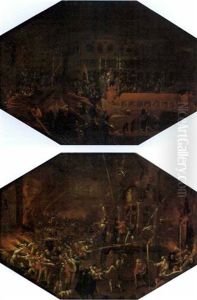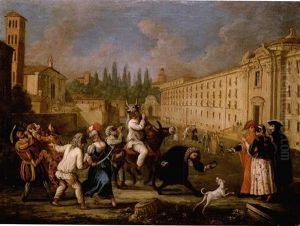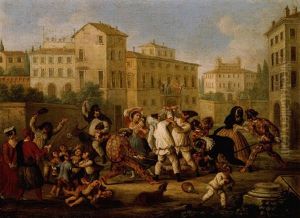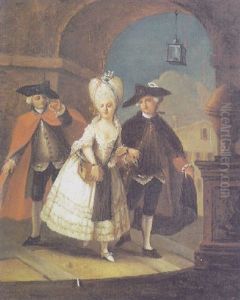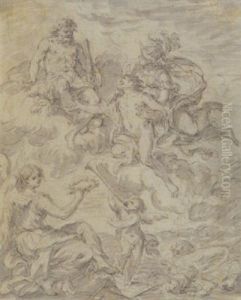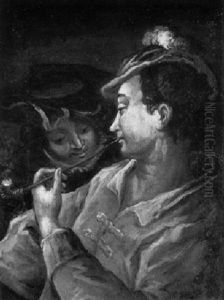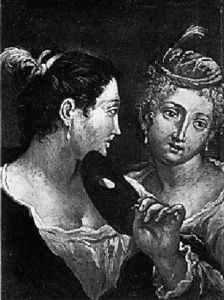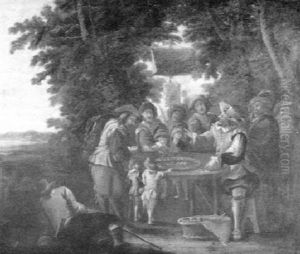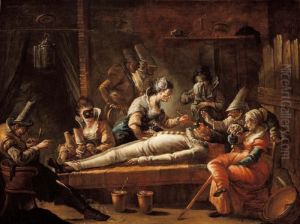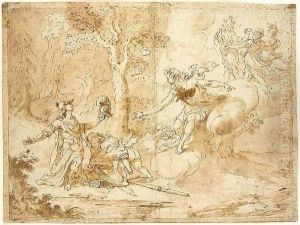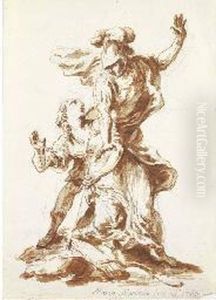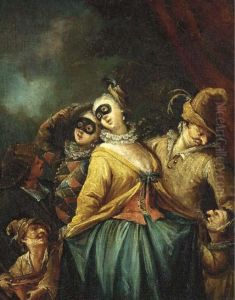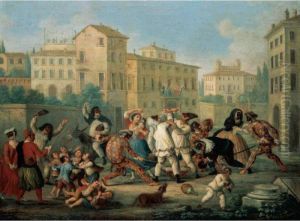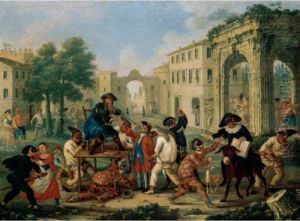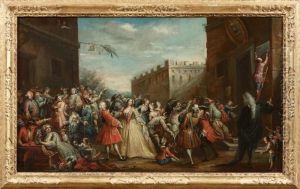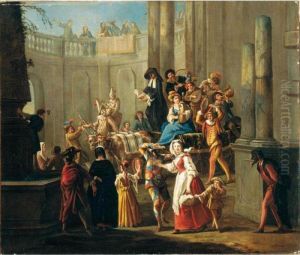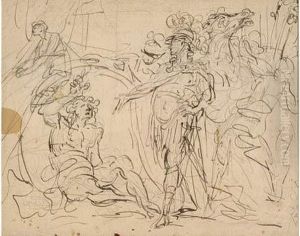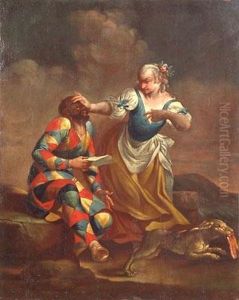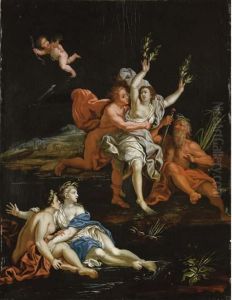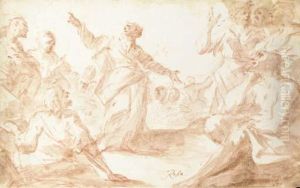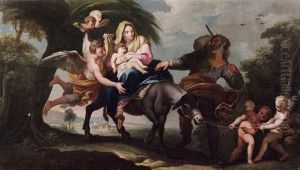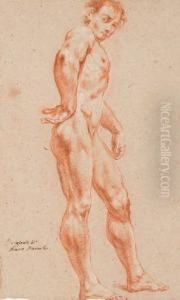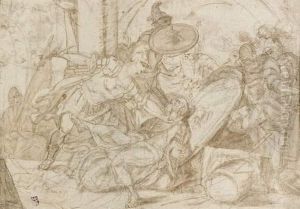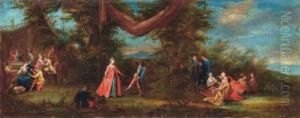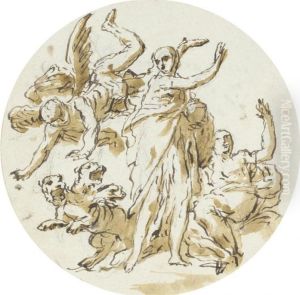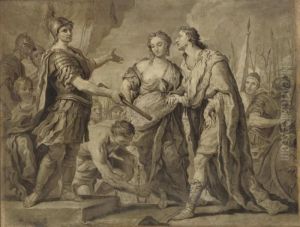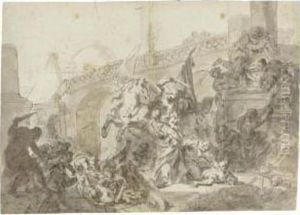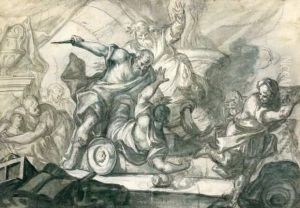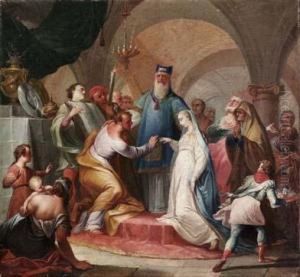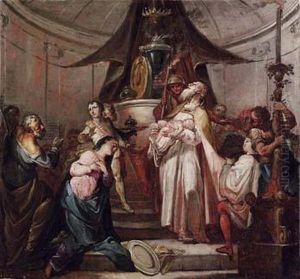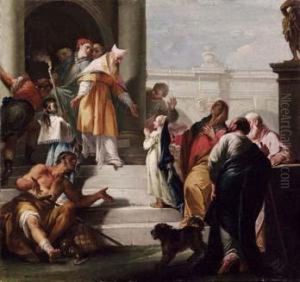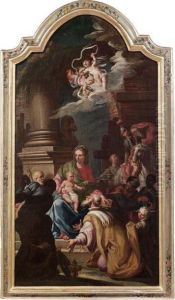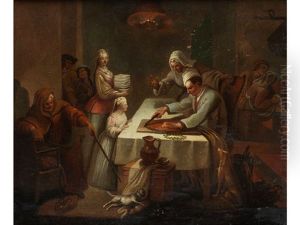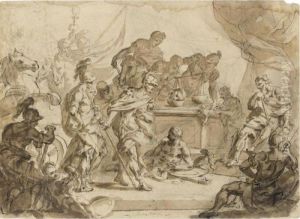Marco Marcola Paintings
Marco Marcola was an Italian painter and etcher from the Republic of Venice, particularly active during the Rococo period. Born in 1740 in Venice, he was part of a family of painters, with his father, Giovanni Antonio Marcola, also being a well-known artist of the time. Marco Marcola is often associated with the Venetian school and was influenced by the works of other Venetian painters such as Giovanni Battista Tiepolo, whose style marked the high point of the Rococo in Venice.
Marcola's work included religious themes, genre scenes, and portraits. He is particularly noted for his skill in depicting light and his delicate handling of color, which was characteristic of the Rococo style. His paintings demonstrate an elegance and a fascination with the playful and the ornamental, which were typical of the period.
Throughout his career, Marcola received commissions from various prestigious institutions and individuals, which allowed him to contribute to the artistic landscape of Venice. He also worked on decorative projects for Venetian palaces and churches, showcasing his versatility as an artist.
Despite his contributions, Marco Marcola is not as well-known as some of his contemporaries. His works have often been overshadowed by the more dominant figures of Venetian painting of the time. However, his art remains a testament to the richness of the Rococo style and the cultural vibrancy of 18th-century Venice.
Marco Marcola's artistic legacy continued through his students and the influence he had on other artists. His etchings and paintings can still be found in various collections and museums, offering insight into the aesthetic preferences and artistic techniques of the Rococo era in Venice. Marcola died in 1793, leaving behind a body of work that continues to be appreciated by art historians and enthusiasts of Venetian art.
